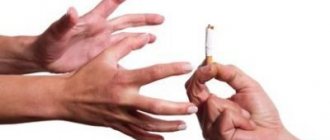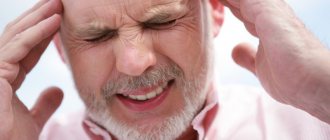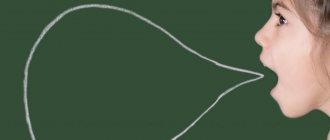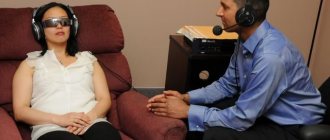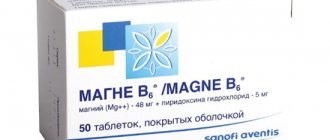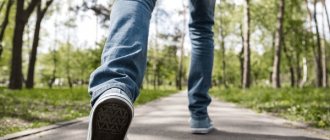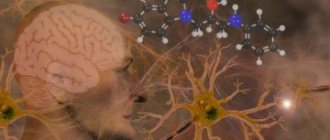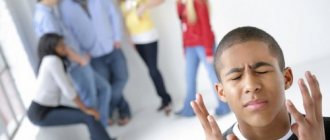Childhood neurosis
The disease is divided into two types:
- The hypersthenic form, in which children behave noisily and hot-tempered, they are overly active. They say about such a child “there are a lot of him.” He reacts brightly and violently to everything that happens, shudders at the slightest touch;
- Hyposthenic - manifests itself in the form of a weakened state, fearfulness and tearfulness, tightness, and a tendency to self-digging.
The main causes of neurasthenia in children include:
- Disruption of the normal course of pregnancy, which leads to a congenital disorder of the fetal nervous system. Such factors include previous infectious processes during pregnancy, prolonged stress of the mother, adverse effects of chemicals and drugs;
- Hereditary predisposition in which neurasthenia occurs quite often in the family;
- Long-term stress that can occur at school or kindergarten, at home in the family circle;
- Weak mental health of the child. The nervous system of such children is very plastic and is easily subject to deformation. It manifests itself in the form of isolation, groundless anxiety and worries.
- Infectious lesions;
- Eating disorders, malnutrition;
- Diseases of the endocrine system.
Teenage crisis
Negativism is also a symptom of the teenage crisis: hostility appears, a tendency to violate discipline and quarrels, and a desire for loneliness. Harmony between rights and responsibilities is very painful to form. Negativism is especially pronounced in young men.
Relationships with peers are more important for adolescents than with adults. The teenager becomes isolated from his family. Often teenagers form groups and companies with common interests, whose values differ from those of adults, and oppose them. This gives them a sense of independence.
Different values lead to inevitable disagreements with adults: about hairstyle, clothing style, school success, free time. And yet, the main values and aspects of social life, and attitudes towards them are inherited from parents. And momentary issues are resolved with peers.
Authoritarian control, prohibitions and manipulation of a child will lead to a paradoxical effect: either low self-esteem or a socially unacceptable form of behavior. But parental non-intervention and weakening of control are fraught with dangers when a teenager is left to his own devices, making decisions and choosing companies.
Adolescence is characterized by emotional outbursts and violent experiences; Almost every one of them has thoughts of suicide. Social phobias are predominant. Great importance is attached to assessing one's appearance and its shortcomings. Anxiety sometimes leads to self-isolation and fear of closed and open spaces.
Fear of ridicule, increased sensitivity, sudden mood swings are emotional disorders that are more typical for girls.
Symptoms of childhood neurasthenia
It is diagnosed mainly in primary school age or adolescence. If the disease is congenital, then the child’s non-standard behavior will be observed from the first years of his life. Signs of the disease:
- Noisy behavior, fussiness. They are persistent and demanding. Children may be sedentary and whiny;
- Sleep disorder with multiple awakenings screaming during the night. Children usually do not sleep during the day;
- Pickiness to food, loss of interest in it due to various irritants.
In preschool children, new symptoms are added to the listed ones:
- Increased excitability and short temper, moodiness;
- Stool disorder, which is expressed in a tendency to constipation;
- Uncontrolled urination;
- Rapid mood swings and emotional instability;
- Advancement of neuropsychic development is unusual for age. Such children grasp everything new, literally, on the fly;
- Unclear pronunciation of certain sounds.
In adolescents, these signs are added:
- Irritability;
- Increased fatigue during mental and physical stress;
- Chronic fatigue, difficulty recovering even after rest;
- Problems concentrating;
- Anxiety, which is expressed in discomfort in the abdomen or heart;
- Changes in blood pressure, which is accompanied by headaches;
- Involuntary sweating – hyperhidrosis, which manifests itself mainly in the palms and soles;
- Cardiopalmus;
- Small tremor, also known as trembling, in the fingers.
Main types of neuroses
Each nervous disorder has its own special features. The following forms are distinguished:
- Hysteria with seizures;
- Obsessive-compulsive neurosis;
- Phobias or uncontrollable fears;
- Neurotic tics;
- Logoneurosis or stuttering;
- Enuresis or bedwetting.
Hysteria refers to a type of neurosis in which the main manifestations are:
- Increasing the threshold of sensitivity and impressionability;
- High suggestibility;
- Unstable mood;
- Selfish behavior;
- Need for recognition.
Hysteria is characterized by a discrepancy between the patient’s complaints and objectively revealed data during a doctor’s examination. There are frequent hysterics that can be confused with a convulsive attack of epilepsy. However, they have a number of differences:
| Epileptic seizure | Hysterical attack |
|
|
Obsessive-compulsive neurosis is characterized by fixation on something, self-doubt, indecision, and suspiciousness. Such children look at everything new with fear; they are afraid of loneliness or the dark, insects or animals. This state is characterized by anxiety, fear of becoming infected with something or getting sick. Children often come up with various prohibitions for themselves so that their fear does not come true.
Obsessive manifestations in the form of persistent involuntary thoughts. Such conditions are called obsessive-compulsive. Obsessions are obsessions and compulsions are actions. They can concern mathematical calculations of everything around us. The behavior is of a ritual nature in the form of frequent hand washing or jumping up in a strictly defined order, patting and many others.
Fears are not uncommon for children. There are phobias that may concern fear of animals or insects, darkness (nyctophobia), death, closed spaces, clowns. The fear of spiders is called arachnophobia, and the fear of clowns is called coulrophobia.
Neurotic tics are manifested by conditioned reflex movements with a certain sequence. Characterized by stereotypical contraction of individual muscles. May be blinking, may involve raising the eyebrows, twitching the nose. Tics go away on their own, and are caused by the slightest mental stress and anxiety, fear.
Logoneurosis or neurotic stuttering is manifested by a violation of the rhythm and tempo of speech, its smoothness. The condition occurs due to muscle cramps. Logoneurosis can occur after suffering an emotional shock, a strong impression or fright. Stuttering often develops in childhood due to the fact that during this period the formation of thinking and the complication of phrasal speech occur.
Logoneurosis often has a hereditary predisposition. In young children, both clonic and tonic convulsions of the muscle groups of the speech apparatus occur. Stuttering intensifies with excitement and is accompanied by friendly movements that make speech easier. This could be tapping one foot or snapping your fingers. Older people are characterized mainly by tonic convulsions.
Often stuttering returns again after a seemingly complete cure. In severe cases, logoneurosis is fixed for a long time. Neurotic stuttering occurs in waves with periods of relapse due to stress and subsidence. An increase in pathology is observed in adolescence during puberty.
A common neurotic disorder is enuresis, which manifests itself in the form of bedwetting. It also happens of an organic nature, associated with a violation of nerve conduction to the cerebral cortex. But neurotic enuresis occurs as a result of emotional and mental shock. Rarely combined with encopresis - fecal incontinence.
Treatment or rehabilitation of teenage neuroses
Neuroses in adolescents are treated by:
- pediatric neurologist: examines the teenager to clarify the diagnosis, prescribes sedatives or other medications if necessary;
- child psychologist: helps teenagers cope with complexes, and parents find the right tactics and approach to the teenager, create the necessary psychological, friendly family climate;
- psychotherapist: for obsessive-compulsive neurosis, conducts hypnosis therapy sessions.
Diagnosis and treatment
When making a diagnosis, the neurologist focuses not only on the external manifestations of neurasthenia and the child’s complaints, but also on objective research methods. The doctor checks reflexes and sensitivity.
The earlier neurosis is detected, the more timely assistance will be provided and the better the prognosis awaits the child. Diagnostic manipulations consist of the following stages:
- Psycho-emotional analysis;
- Study of family relationships between a child and his parents;
- Observations during gameplay;
- Analysis of children's drawings;
- Conversations with the baby's loved ones.
Various non-drug therapies are used in the treatment of neurasthenia. Non-drug medications include:
- Nutrition, which involves nutritious consumption of food: both fruits and vegetables, and dairy and meat products;
- Physical activity with walks in the fresh air;
- Drinking infusions of medicinal herbs that have a calming effect. Motherwort herb and valerian root, marsh cudweed are particularly effective;
- Therapeutic baths that relieve irritation. The child is immersed in water with bran or pine needles.
Drug therapy involves the use of:
- Nootropics that stimulate brain function and improve its nutrition - Piracetam, Encephabol or Aminalon;
- Tranquilizers, the purpose of which is to relieve the baby of increased anxiety and irritability. Such drugs are prescribed for a short period of time - a couple of weeks. These include Alprazolam and Grandaxin, Mexidol or Atarax;
- Sleep stabilizers - “Phenazepam” and “Diazepam”;
- Vitamin complexes that are aimed at strengthening and restoring the child’s body - “Neurovitan” or “Neurorubin”.
Preventive measures
Since the consequences of neurasthenia in a child are negative, prevention is very important. The main complications include:
- Violation of social adaptation, which is expressed in internal discomfort and difficulty in normal communication and maintaining social connections;
- Depression.
- Protecting a child from neurasthenia consists of observing the following set of rules:
- Exclude, if possible, conflicts and stress. And in case of their occurrence - complete elimination and restoration;
- If signs of neurasthenia appear, visit a psychologist and neurologist with the child;
- Ensuring rational work and rest for the child;
- Complete nutrition with the full range of essential substances;
- Sports activities;
- Creating a calm atmosphere in the house without shouting and arguing;
Spending time together for children and parents in relaxing and unifying activities.
Childhood neurasthenia needs therapy. It can and should be treated. Children are the future. The next generation also depends on their health. If neurasthenia is diagnosed at the very beginning, in childhood, it can be easily corrected. This can change a child’s life for the better and provide him with a happy and fulfilling future!
Author of the article: Neurologist of the highest category Tatyana Mikhailovna Shenyuk.
Features of the formation of neurosis in a child
Next, consider the origin of childhood neuroses.
Their peculiarity in children is their formation against the background of personality immaturity. To understand, the personality of children is determined by the type of upbringing in the family.
It is worth highlighting the main “inadequate” types of upbringing:
- Insufficient attention to the baby is “hypocustody.”
- Excessive attention is “overprotection”.
- Cruel upbringing.
- Authoritarian parenting.
As a rule, improper upbringing can harm the development of a child’s personality and temperament. As a result, negative character traits and inadequate reactions on the part of the child appear. Sooner or later, this leads to a feeling of inferiority, against the background of which any negative external influence can lead to neurosis. The role of a negative factor can be: a rude word, a loud remark, a change in living conditions and much more.
Given the immaturity of personality in children, typical forms of neurosis rarely develop. More often they have simpler disorders - systemic neuroses. They can manifest themselves in any organ and organ system. It is believed that the choice of damage to one or another organ depends on the hereditary susceptibility (weakness) of the organ or body system. Such weak points in children are often the speech-motor system (formation of stuttering) and the urinary system (development of enuresis).
There is also another development mechanism: a combination of increased nervous tension and the performance of a certain action or movement at this moment. So, this action or movement can lead to the formation of tics in the baby. Thus, neuroses in childhood most often manifest themselves as tics, stuttering and enuresis. In the absence of treatment, systemic neuroses with age often become “classical”, as in adults.
Stuttering is common in children with neuroses.
